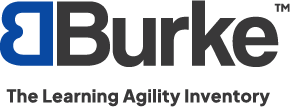AI is Transforming Business—Are You Leading the Charge or Falling Behind?
“Warning to all leaders: if your teams aren’t already using AI to boost quality and productivity, your competitors are—and they’re gaining ground fast. AI is no longer optional; it’s a strategic advantage. So, ask yourself: what are you doing to ensure your organization isn’t left in the dust? It’s time to stop waiting and start leading the way in AI adoption, before your inaction becomes your biggest liability.”
“I was floored the other day when a colleague sent me a video of myself speaking a language I’m not fluent in —with perfect mouth movements and intonation. It didn’t look dubbed at all.” No, I won’t share it here!
The truth is. AI is evolving faster than any of us can keep up with. Generative AI can now create text, digital art, and music, and even imitate your own voice and accent. OpenAI recently released ChatGPT’s Advanced Voice Mode to users in the US, allowing them to have real-time, human-like conversations with AI.
AI research is advancing at an unprecedented pace, and its impact is undeniable. Recently, scientists Demis Hassabis, John Jumper, and David Baker were awarded the 2024 Nobel Prize in Chemistry for their work in AI research. A McKinsey report reveals that generative AI could automate 60% to 70% of employees’ workloads. Meanwhile, research from the World Economic Forum predicts that while 85 million jobs may be displaced by 2025, 97 million new jobs could be created in fields like AI, machine learning, and cybersecurity.
How AI is Transforming Work and Daily Life
AI is reshaping how we shop, play, and work. From personalized shopping recommendations to chatbots and predictive analytics, AI algorithms can mimic complex behaviors, optimize game mechanics, and personalize user experiences. It also enhances problem-solving, decision-making, perception, and even language comprehension.
Yet, despite these advancements, AI has sparked fear and resistance in organizations. A Harvard Business Review article highlights that employees increasingly feel excluded or less essential as machines take over tasks once reserved for humans. A Monmouth University Polling Institute survey found that only 1 in 10 (9%) Americans believe that AI will do more good than harm to society. Despite concerns, particularly regarding the ethics of AI, there’s no turning back. To succeed, organizations need to embrace change rather than resist it.
How Can Organizations Help Teams Embrace AI?
There has never been a more crucial time for flexibility, speed, experimentation and performance risk-taking in organizations.
These are four of the nine dimensions identified by Columbia University Emeritus Professor Warner Burke in his ground-breaking research about learning agility.
- Flexibility: The ability to shift perspectives and approaches when faced with new information or challenges.
- Speed: The capacity to quickly grasp new concepts and apply them effectively, a critical skill when navigating rapid technological change.
- Experimentation: The willingness to try new things and step outside of one’s comfort zone, crucial for innovation and problem-solving.
- Risk Taking ( Performance and Interpersonal): Pushing yourself out of your comfort zone both in terms of the level of ambiguity you take on and in your willingness to take an unpopular position or admit mistakes.
How can organizations assess their employees’ ability to adapt to AI?
Gauging the organization’s learning agility baseline capacity is a crucial way to start. Dr. Warner Burke’s research was the basis for what has now become the The Burke Learning Agility method, assessments and developmental programs that help enhance learning agility.
As technology evolves, debates about AI will continue. However, one thing is certain: organizations with strong learning agility are using AI to boost productivity and quality.
If you’re company is not among them, it may be time to catch up.

